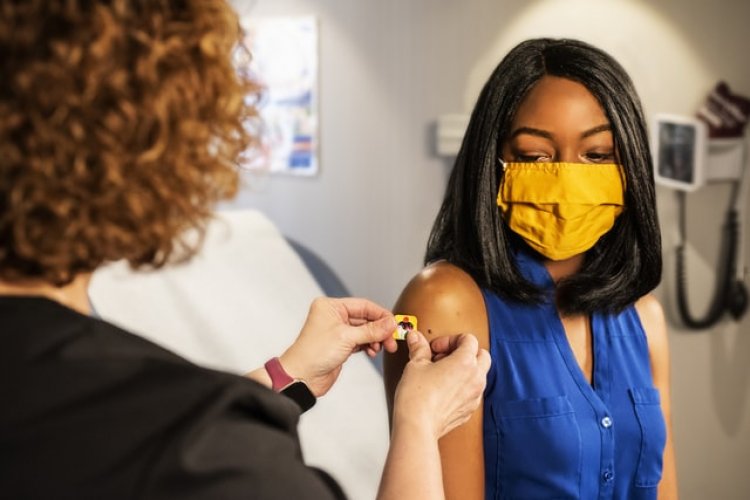Healthy 40-Year-Olds Around The Globe Are Suddenly Collapsing – Why?
Since the start of the mass jabbing process, we have learned the side effects of the Pfizer–BioNTech injection activating latent viruses, including hepatitis C and shingles, or the side effect of the Oxford-AstraZeneca shot reactivating a herpes virus called cytomegalovirus. Interestingly enough, Moderna recently announced that it was testing a new vaccine to prevent cytomegalovirus because it is “the leading infectious cause of birth defects in the United States.”

Underlying factors include irregularities in the heart muscle, which trigger cardiac arrest. While known to occur previously, the prevalence of this rare event is new, and shocking.
Andrew Barry frequently played soccer and cycled. He had just completed a workout and was getting ready for bed. Then, suddenly, Barry stopped talking to his wife and stared with glazed eyes, the color drained from his face. He collapsed dead to the ground, at just 35.
Danielle Hampson was a loving fiancée and mother to a baby boy. Hampson, a public relations executive, and dancer, died suddenly just hours before her wedding. She was 34. The cause of death? Unknown.
Sadly, these tragic events are becoming increasingly prevalent.
In recent weeks, the mainstream media around the world has started spotlighting a medical phenomenon called “Sudden Adult Death Syndrome (SADS).” People under 40 are being encouraged to have their hearts checked because God forbid, they could be close to taking their last breath but have no prior symptoms.
What is Sudden Adult Death Syndrome?
The phenomenon occurs when an otherwise healthy person passes away suddenly, with the cause likely related to a heart condition. It is also known as “Sudden Arrhythmic Death Syndrome,” where “arrhythmia” refers to an irregular heartbeat. Due to the heart’s electrical function being affected, such disturbances are detected while living, not dead.
It is unclear why “arrhythmia” has been replaced with “adult.” Perhaps the masses will easily remember the latter term, but it creates ambiguity and anxiety since the global average age is under 40.
In Barry’s case, an MRI could have at least identified a genetic condition. A post-mortem later revealed he had “Arrhythmogenic Ventricular Cardiomyopathy,” which causes fatty tissue to replace the heart muscle.
The rare disease of Long QT Syndrome can reportedly increase a person’s risk of SADS. As a heart rhythm disorder caused by changes in the heart’s electrical system, this condition worsens with exercise.
What is the historical prevalence of such deaths?
According to the U.S. SADS Foundation, over half of the 4,000 annual SADS deaths of children or young adults have one of the two warning signs: a family member had a sudden unexplained death, or they were prone to fainting or seizure during exercise.
According to the British Heart Association, there are around 500 cases of SADS in the U.K. every year. In addition, the country’s Office for National Statistics list the following SADS cases for all age groups: 128 (2016), 77 (2017), 70 (2018), 107 (2019) and 139 (2020).
A 2021 study by the Baker Heart and Diabetes Institute in Melbourne, Australia, reveals that approximately 5,000 people suffered cardiac arrests in the state of Victoria over 12 months in 2017 and 2018. Sadly, just 15 percent of them survived and made it to the hospital.
Meanwhile, a new registry of SADS is reportedly being developed by the Institute to track the phenomenon. It would be fair to ask—why now?
According to a spokesperson for the Institute:
There are approximately 750 cases per year of people aged under 50 in Victoria suddenly having their heart stop (cardiac arrest). Of these, approximately 100 young people per year will have no cause found even after extensive investigations such as a full autopsy (SADS phenomenon).
While data on SADS incidence for 2021 and 2022 needs to be gathered and quantified, the prevalence has arguably risen enough to spark concern.
What do we know about athletes and SADS?
An analysis of data from the International Olympic Committee reveals that between 1966 and 2004, there were 1,101 sudden deaths of under 35 year-olds, an annual rate of 29 cases. But, shockingly, between March 2021 and March 2022, at least 769 athletes worldwide reportedly collapsed, suffered cardiac arrest or tragically died on the field across all sports.
What may have contributed to more young adults suddenly collapsing dead?
Increased COVID-related SCD appears to be due, at least in part, to a recent history of infection and/or vaccination that induces inflammatory and immune impairment that injures the heart. An unhealthy lifestyle that may include poor diet or overtraining may likely be a contributing factor. The seeming increased incidence of myocarditis and pericarditis during COVID-19 and in the post-vaccination period, and SCD, poses a serious risk to not only athletes but all others and is a cause for alarm.
Where the matter involves everyday young Americans, in late June 2021, the Advisory Committee on Immunization Practices (ACIP) concluded that the Pfizer-BioNTech and Moderna shots contributed to an “elevated risk for myocarditis”, especially in young males between 12 and 29 years old.
But, unsurprisingly, the ACIP also stated that the “benefits of COVID-19 vaccination to individual persons and at the population level clearly outweighed the risks of myocarditis after vaccination.”
Adding further weight to the growing concern, in August 2021, an Israeli study showed that the incidence of myocarditis increased after receiving the Pfizer-BioNTech shot, particularly after the second dose among men under 30 years old. Moreover, a JAMA study published during the same time revealed that myocarditis “may be a rare complication after COVID-19 vaccination in patients aged less than 19 years.”
A systematic review published by JMRI in May 2022 analyzed the cardiac MRI findings of 468 patients between January and April 2022. The meta-analsyis concluded that the diagnosis of “myocarditis may be detected in over two-thirds of patients with suspected myocarditis following COVID-19 vaccination.”
A weaker immune system increases the risk of infection
[T]he largest changes were decreases in the lymphocyte count after the first dose in 8.3% (1 out of 12), 45.5% (5 out of 11) and 50.0% (6 out of 12) of participants who received 10 ?g, 30 ?g and 100 ?g BNT162b1 [Pfizer-BioNTech], respectively. One participant each in the 10-?g (8.3% (1 out of 12)) and 30-?g (9.1% (1 out of 11)) groups and 4 participants in the 100-?g group (33.3% (4 out of 12)) had grade 3 decreases in the lymphocyte count. These decreases in lymphocyte count after the first dose were transient and returned to normal 6–8 days after vaccination (Extended Data Fig. 1). In addition, grade-2 neutropenia was noted 6–8 days after the second dose in 1 participant each in the 10-?g and 30-?g BNT162b1 [Pfizer-BioNTech] groups.
It is known that people with a weakened immune system risk experiencing frequent infections and severe symptoms. Since the start of the mass jabbing process, we have learned the side effects of the Pfizer–BioNTech injection activating latent viruses, including hepatitis C and shingles, or the side effect of the Oxford-AstraZeneca shot reactivating a herpes virus called cytomegalovirus. Interestingly enough, Moderna recently announced that it was testing a new vaccine to prevent cytomegalovirus because it is “the leading infectious cause of birth defects in the United States.”
The “effectiveness” of the booster shots
Meanwhile, concerns have been raised. The head of Biological Health Threats and Vaccines Strategy at the European Medicines Agency, Marco Cavaleri, had the following to say at a press briefing:
If we have a strategy in which we give boosters, let’s say every 4 months approximately, we will end up potentially having a problem with the immune response, and the immune response may end up not being as good as we would like it to be.
To add more weight to this concern, Dr. William Schaffner, an expert in infectious diseases at Vanderbilt University in Tennessee, expressed the following (common sense):
It’s just well established that the immune system needs some time to process the information that it gets: the stimulus from a vaccine or a natural infection. And then if you want to boost it, you have to give it a certain amount of time to ‘digest’ that information so that it can respond optimally.
Moreover, preliminary research at an Israeli hospital shows that the immune system doesn’t appear to produce enough antibodies after a fourth shot to prevent infections from a reportedly recent coronavirus variant.
It’s all so very educational. But hasn’t high school biology taught us the essentials of looking after our health since records began?
It seems like we’ve reached a stage where the ‘experts’ need to communicate what we know to be common sense: maintaining and strengthening our immune system is our best weapon against infection.
By Cameron Keegan
Cameron Keegan is an independent researcher and writer on American politics, faith, and culture affecting young people through a conservative disposition. Having worked with children, teenagers, and young adults to support their learning and development, Cameron cares deeply about the trajectory of the United States. To learn more about Cameron’s work, visit https://ckeeganan.substack.com, and for comments or questions, send an email to ckeeganan@substack.com.
Enjoy HUGE savings at My Pillow with promo code BSC
The views and opinions expressed in this article are solely those of the author and do not necessarily represent those of The Blue State Conservative. The BSC is not responsible for, and does not verify the accuracy of, any information presented.
Notice: This article may contain commentary that reflects the author’s opinion.
By Cameron Keegan
Cameron Keegan is an independent researcher and writer on American politics, faith, and culture affecting young people through a conservative disposition. Having worked with children, teenagers, and young adults to support their learning and development, Cameron cares deeply about the trajectory of the United States. To learn more about Cameron’s work, visit https://ckeeganan.substack.com, and for comments or questions, send an email to ckeeganan@substack.com.






















